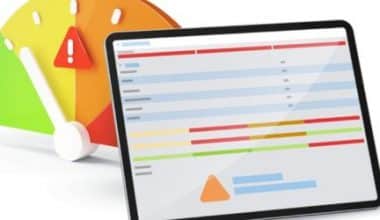Your company may have a terrific new direction and a great vision, but without well-selected, clearly stated sales goals, your sales team won’t be able to lead you in the right way. Recently, we discussed the importance of motivation in sales and how arranging your tactics and objectives is crucial to a business’s success. So what should ideal sales goals look like? To give you a clue on the processes of SMART sales goals, this post is for your understanding of how to set and track sales.
Sales Goals
Your sales team has objectives that are specified as sales goals. These objectives are frequently linked to overall corporate objectives and it bases on a particular sales called KPI. Examples of typical sales goals include raising revenue by 25% annually or increasing client retention by 10% in 2023. Together, the sales staff, corporate leadership, and the finance department develop sales objectives that support the organization’s long-term goals and aspirations for expansion. The sales team is in charge of turning these goals into measurable, doable activities once they have been decided upon.
It might be challenging to create and sustain a network of sales objectives. I bet you don’t want your team’s strategy to be overly generic or for their desire to be sapped by a bewildering assortment of unrelated figures to pursue. Hence, while establishing your sales targets, take into account the larger organizational objectives and your specific team. The secret to choosing effective sales goals is to match them up with your current resources, including your budget, workforce, and tech stack.
Why is it Vital to Set Sales Goals?
Your team and you can assess your success and growth with the aid of well-crafted sales targets. Goals can also be used to set deadlines, assign responsibilities, and clarify expectations. By letting them know how well they’re doing and how much work is still needed to reach their objectives, this knowledge can inspire your team to perform better. Establishing sales targets can help assure management that you and your team are delivering results that are up to par.
Sales Goals Example
You can use the examples of sales goals provided below to build goals that will help your sales team:
#1. Boost Monthly, Quarterly, or Yearly Income
Your team, department, or the entire organization may want to increase income. Many additional objectives are smaller stages toward long-term revenue growth, which is one of the main sales goals. Determine how much more your sales staff may earn by analyzing your monthly, quarterly, or annual revenue. This will depend on whether you make any adjustments or boost productivity. Establish this amount as your income target and urge your team to regularly review it to stay on course.
#2. Keep More Clients
Because repeat consumers are more likely to make another purchase, customer retention is essential for a business’s success. Also, it is less expensive for businesses to reward consumers for their loyalty than it is to find new ones, thus many small teams prioritize client retention. Using analytics tools to ascertain which ads and strategies are most effective with loyal clients is one approach to accomplish this goal.
#3. Reduce the Cost of Acquiring New Customers
A useful objective for sales teams is to reduce the cost of recruiting clients to their business because it frequently costs more to acquire them than to keep them. There are a few ways to accomplish this, and one of them frequently is looking at consumer analytics to identify which ads are most effective and which are less successful.
#4. Boost Your Profit Margins
Profit margins are the sums of money that your business makes from each sale of a good or service. Gaining additional revenue enables you to keep your business within budget and have extra money for marketing and sales.
#5. Motivate Devoted Clients to Make Larger Purchases
This objective focuses on persuading repeat consumers to buy more products from your business because they are a wonderful source of revenue. These purchases could be upgrades, additions to an existing product, or pairings of complementary goods.
#6. Shorter Sales Cycle
The sales cycle is the amount of time it takes a sales representative to close a deal after identifying a potential lead. By breaking this loop, sales representatives may regularly close more deals, which will grow your business’s clientele and revenue.
#7. Increase the Number of Completed Transactions
After clients make a purchase, sales representatives will finish the deal. The success rate and income of a business might rise if a lot of deals are closed, so this is a frequent objective for sales teams to strive for. Offering opportunities for practice and training can help your staff close more business.
#8. Automate Simple or Routine Tasks.
Your team may spend more time making sales by automating tasks, and less time inputting data or completing paperwork. Many managers of sales teams make automation a priority in order to enhance the working conditions for their staff and boost output, morale, and job satisfaction.
Smart Sales Goals
Sales managers and the C-suite leadership develop SMART sales goals as objectives to direct sales teams and departments. Using the SMART acronym, these goals use five criteria to establish a clear aim that staff members can collaborate on. These criteria are Specific, Measurable, Achievable, Realistic, and Time-Based.
Here is an example of how to set sales goals using the SMART method:
#1. Specific
Don’t just state that you want to expand your clientele or boost sales; be specific about how you intend to do it. You may say, for instance, “We’re planning to use a consultative sales technique to raise the revenue of our primary product.”
#2. Measurable
Set up your tools and software to measure your progress toward the objective and specify the precise quantity you want to achieve (for example, increase revenue by $1M) so that you can compare your performance to it
#3. Achievable
Stretch goals are a terrific way to challenge yourself and your team, but you shouldn’t create insurmountable targets. You shouldn’t aim for $5M in income this year if your last year’s total was only $700,000. Set a goal that you and your team both believe is doable instead.
#4. Realistic
Your goals must be appropriate for your situation and sales technique. You shouldn’t establish a target to acquire 100 new clients via Instagram selling if your business has never engaged in social media selling and your clientele isn’t interested in the platform. Context is important, just like it is for all other goals.
#4. Time-Based
Make sure there is an endpoint when you develop sales goals. Instead, you risk trudging along for years without experiencing much development or progress. Since they naturally coincide with the fiscal start and stop dates, quarterly and yearly markers for sales goals are the simplest to set.
How to Set Sales Goals
Everyone on the sales team, as well as senior and c-suite management, can develop sales goals. The finance staff is occasionally a part of them. Goals for the entire team are frequently set by sales managers, and salespeople are also encouraged to set their own targets. If you’re setting sales targets for your team or for yourself, the procedure is the same. Below are some points to consider on how to set sales goals using the SMART method:
#1. Find Potential Growth Zones
Examining your current sales data and KPIs closely in order to identify your greatest strengths and potential growth areas is the first step in developing new SMART sales targets. Try your best to identify the underlying source of any problems you encounter. Your objectives will be more successful the more precisely you can pinpoint the areas where deals are going astray.
#2. Choose the Most Important and Realistic Things
Almost all sales goals are worthwhile ones, provided they are written in the SMART manner, of course. Most sales teams strive to continually surpass previous achievements in order to advance their company. And it would be great if each sales team had enough time to pursue all of their desired objectives. If you’re just getting started, focus on goals that will improve your cash flow, transparency, and productivity. All of them are excellent starting points.
You should also think about how well your current resources are matched to achieving specific objectives. For instance, if you want to increase lead generation, you might need to hire more business development reps (BDRs) to free up more senior reps’ time to close agreements. Not every organization, especially in the beginning, has the resources or cash flow to commit to something like that.
#3. Choose a Goal and Write it Down Using the SMART Format.
It’s time to lay down the specifics of your new sales objective once you’ve identified your highest priorities and reduced those to only those that are achievable given the resources at your disposal. Keep in mind to adhere strictly to the SMART structure to set sales goals. It does take some getting used to, so make notes as you go. The more you use it, the better you’ll get at it. It’s important to keep in mind that action goals are typically simpler to pursue and accomplish than outcome-based ones. However, a number of things may have an impact on the revenue-based target. An outcome-based goal is much harder for sales representatives to influence than an activity-based one.
#4. Boost Your Sales Team by Educating Them
Even the best-written SMART goals will prove to be largely ineffective if your team isn’t aware of how to achieve them and isn’t motivated to do so. If you’re setting a team-wide sales objective, be sure to allot enough time for your sales representatives to understand the goal. Also, you’ll want to ensure that they have access to all of the instruction, equipment, and other resources they’ll require to accomplish those goals. Of course, motivation needs to come from within as well. To properly drive sales reps to meet high objectives, sales managers must foster an environment of trust, accountability, and gratitude.
#5. Keep an Eye on Your Development.
Effective sales targets are based on how well the stakeholders track their progress. If possible, specify in your SMART objective the time intervals at which you want to gather data on your target’s progress. If this is a collaborative objective, make sure there are clear guidelines about how, when, and where to gather data relating to the goal.
Track Sales Goals
Sales goals tracker assists business owners in keeping track of the development and performance of their sales activities, reps, and teams, providing them with an accurate picture of the state of their enterprise as a whole. The sales goals trackers, track compile data into dashboards with task lists and key performance indicators (KPIs). We looked at dozens of solutions with varying features, special advantages, and prices to assist you to discover the finest tool, and we came up with the top sales activity trackers for diverse use cases to track goals.
Here are our selections for the top track sales goals tools:
#1. Pipedrive
Popular CRM for small enterprises Pipedrive puts a focus on communication and tracking sales activity. You can utilize this sales-centric platform to define individual or team sales performance goals involving deals, the overall value of deals finished, or the number of potential deals added. Also, managers can monitor development by creating performance reports according to the team member, pipeline stage, or time frame. Pipedrive touts a simple and streamlined UI, as well as key elements like an automatic sales assistant, workflow automation, and deal reports.
#2. HubSpot
Teams can view sales performance and activity via a dashboard using the HubSpot CRM platform. Users can design sales dashboards to display particular data, such as calls placed or appointments scheduled. Teams and individuals can also define sales goals and evaluate achievement by generating performance reports and adding target data to the charts for comparison. HubSpot makes it easy to generate data, run email marketing campaigns, and organize leads—making it an excellent choice for a sales goal tracker app.
#3. Trello
Teams may collaborate and see tasks that need to be finished using a Kanban-style board in Trello, a project management application. By employing a board as a sales pipeline and individual cards to represent leads or possibilities, it may be utilized to track sales operations. Users can automate workflows using the Butler Automation function to cut down on manual duties.
The calendar view feature in Trello allows users to browse their board of sales activities by date. For tracking opportunities with extended sales cycles, this is extremely helpful. Sales teams may identify where leads are in the sales funnel as well as when particular actions to advance the lead have been finished. Trello users can utilize it as a customer relationship management (CRM) solution thanks to these sales monitoring features.
#4. Google Tasks
The distinctive feature of Google Tasks is that it can be used in Gmail, Google Calendar, or Google Documents as a sidebar or through the Google Tasks app. With the option to easily create tasks from within Gmail or sync tasks to a Google Calendar, this makes it especially helpful for organizations wanting to track sales activities within Google Workspace applications.
#5. Smartsheet
Businesses can enter task data for projects or sales activities in a spreadsheet using the powerful project management application Smartsheet. The user may then quickly switch between the Kanban board, Gantt chart, grid style, and calendar views to track sales goals progress. On the sales dashboard, Smartsheet also provides tools for showing unique key performance indicators (KPIs).
#6. Monday.com
Monday.com is a great sales goal tracker that can be tailored to fit the specific goal-tracking requirements of your company. For entering data, generating columns, and selecting color schemes, it features simple-to-use tables. On multiple boards, including Kanban, calendar, and card layouts, all of the tables are seen. Thanks to the customization options, you can use Monday.com as a sales goals management tool or as a customer relationship management (CRM) tool that records or track a lead’s progress through the pipeline.
Read Also: SALES COMPARISON APPROACH: All You Need To Know
What Are Basic Sales Goals?
Sales objectives cover a wide range of topics, such as growing the client base, achieving revenue goals, or decreasing attrition rates. Usually, they consist of shorter-term actions that add up to long-term benchmark targets. The sales goals you establish must make sense for your company or department.
What Are the 5 Smart Goals?
Specific, Measurable, Achievable, Relevant, and Time-Bound are the acronyms for SMART goals. By defining these parameters in relation to your goal, you can be sure that your goals can be attained in a set amount of time.
What Are the 7 Smarter Goals?
The abbreviation S.M.A.R.T.E.R., which stands for Specific, Measurable, Achievable, Relevant, Time-Bound, Evaluate, and Reward, is used to guide the goal-setting process.
What Are the 5 Types of Goals?
- Career Goals.
- Financial Goals.
- Personal Development Goals.
- Spiritual Goals.
- Relationship Goals.
What Is Your Sales Target?
A sales target is the number of goods that must be sold in a specific time frame to break even or turn a profit. The forecasts in your business plan should be met by these goals.
What Are the Four Levels of Sales Goals?
- Market Coverage
- Sales Force Capability
- Customer Focus
- Product Focus
Related Posts
- WORK PERFORMANCE GOALS: How To Set Them With Examples
- SMART SALES GOALS: How To Set Them With Examples
- PROFESSIONAL DEVELOPMENT GOALS: Definition and Examples
- FINANCIAL GOALS 2023: The Complete Guide for Students and Businesses (+ quick tips)
- Pricing Strategies: Top 7 Examples of Pricing Strategies






